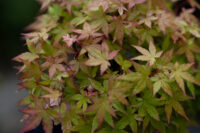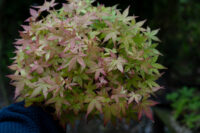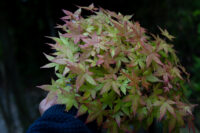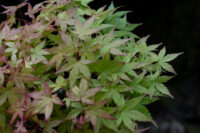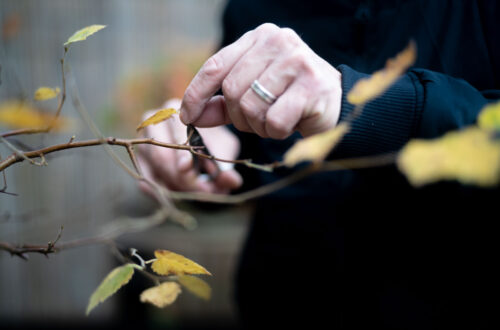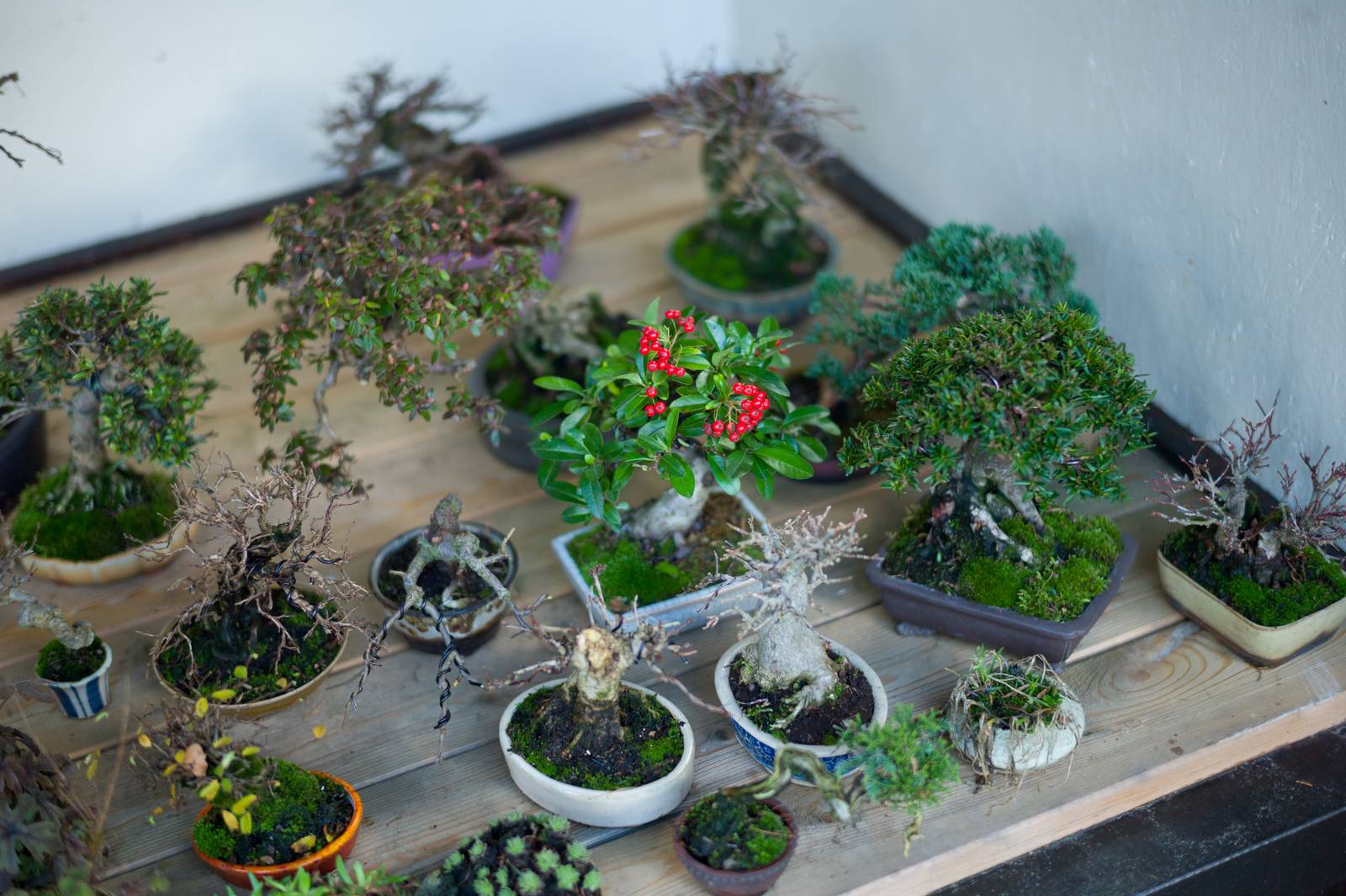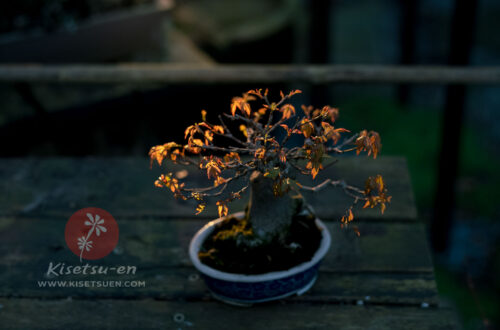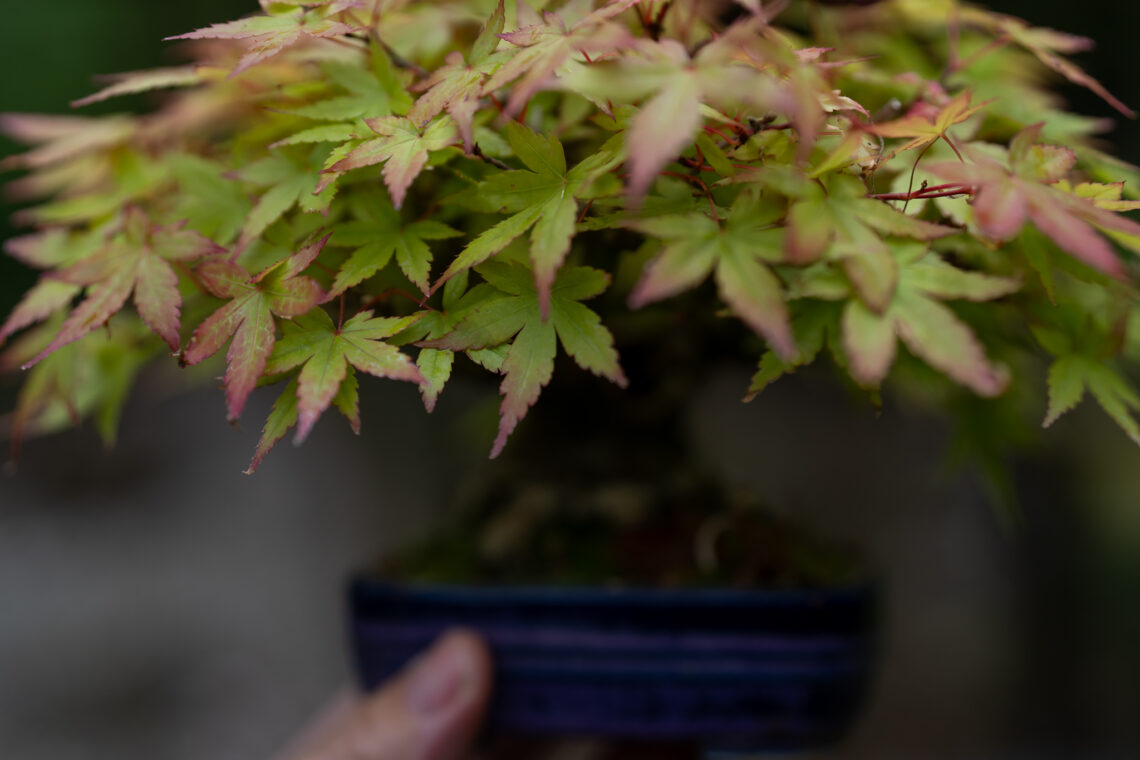
The mystery of Japanese maples shifting leaf colours in summer
In the Kisetsu-en bonsai collection, there are several pieces of the beloved Japanese maple, Acer palmatum.
They all have slightly different habits of leaf development in spring and some colours up differently in autumn. Two of the small Shohin stand out in their different behaviour although they should be the same variety. But if seed grown, or coming from two different sources there can be variations in everything from leaf size, speed of growth, how well they react to pruning and then leaf colourisation.
It shows especially in autumn when we reach the time when the green chlorophyll parts are broken down and let other colours come through. One is especially prone to two reddish and almost purple colours whereas the other presents the autumn leaves in yellow tones.

What has this to do with summer?
When the leaves are hardened after the spring growth, they are green if kept in a semi-shade to shade, but will sometimes show some colours when exposed to the sun. As a protection against too much sun, the green will withdraw and the less light absorbing. anthocyanins and xanthophylls, responsible for most deciduous trees’ autumn colours are dominant.
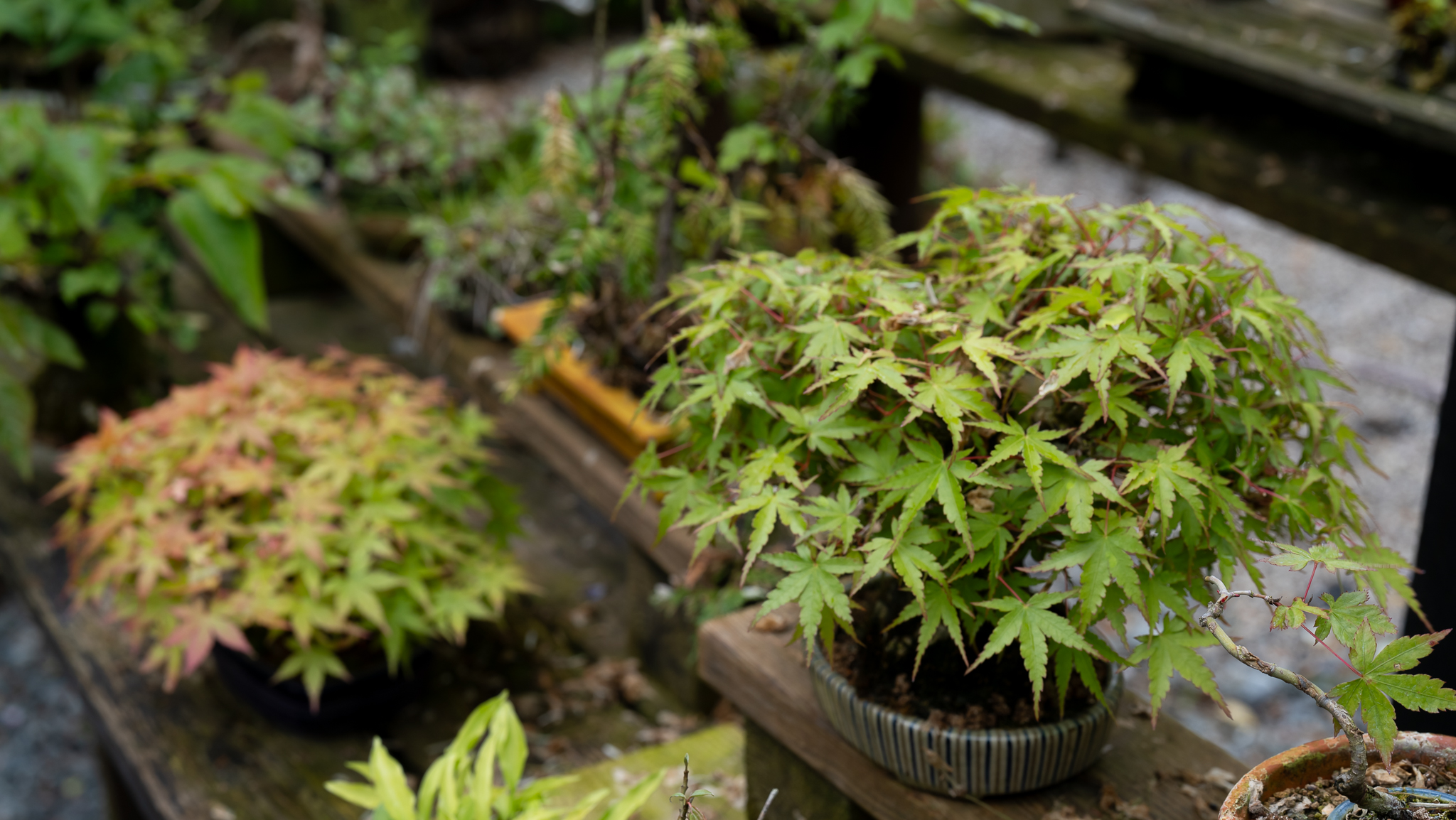
The maple on the right didn’t change its colours like the maple bottom left. Simply different genetics in play here.
You can observe how well this mechanism works in the summer as well. Leafs exposed to more sun will sometimes be coloured, whereas the shadowed areas will show greener leaves. If you had sun on one side only on a bonsai, it could end up being reddish coloured on that side, and pure green on the shadow side of the tree.

We can use this knowledge to help the tree produce vivid fall colours by keeping trees shaded until late summer and then moving them to full sun. But carefully so they are not leaf-burned by the sudden effect of full sun, but move the tree over a few days or during cloudy periods.
Pigment shades against the sun
Maples produce the red anthocyanin pigment to literally shade the photo centres when leaves adapted to shade for a longer period are suddenly exposed to full sun.

All of this depends on the exact variety and genetics. Some Japanese maple trees don’t react at all and others are easily influenced by the light.
Below is a gallery showing the leaves on one particular Shohin Acer palmatum, where it is easy to see the difference between the areas reaching the sun and areas where the leaves stay green. The colours will change over just a few days if have a cloudy period turning back to green all over again.




